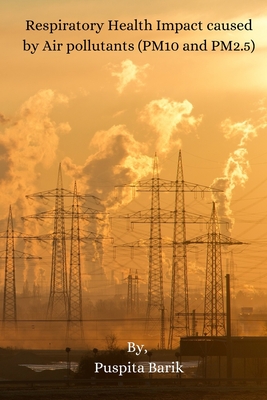You are here
Back to topRespiratory Health Impact caused by Air pollutants (PM10 and PM2.5) (Paperback)
This item is not available this time
Description
The air pollution due to the coal-fired thermal power plant is a primary concern among all the different sources of pollution. Recent scientific literature entails that exposure to PM causes respiratory disorders. The current study reports the monitoring of air pollution by using the CALAUFF The air quality of PM10 concentration has been observed above than 45μg/m3 within approximately 2-3 km radius. The higher concentration profile is spread over the south-west to the northeast direction concerning the plant, The results for the dispersion modelling distribution of air pollutant PM10 showed that the spatial distribution was associated with seasonal meteorological conditions.The concentration observed by CALAUFF modelling is (Summer>Post monsoon>winter). Considering the most probable health impacts due to coal-fired thermal power plant, diseases such as chronic upper respiratory tract infections (URTI), and asthma were focused on in this study. The average annual prevalence (AAP) of asthma at Dhapewada, Patansaongi, Chicholi (CT), Satak, Droli and Kanhan PHCs were observed to be 0.581, 0.218, 0.201, 0.155, 0.377 and 0.198 %, respectively. Whereas, AAP of UTRI at Dhapewada, Patansaongi, Chicholi(CT), Satak, Droli and Kanhan PHCs were 24.961, 40.693, 0.769, 12.775, 28.605 and 14.898%, respectively. Primary data collected from 1126 subjects were processed using indigenously developed EpiHRA (epidemiological based health risk assessment) software. The casecontrol epidemiological study design has been considered for the study. variables/ confounders are taken like socio-economic study, body mass index (BMI), respiratory illness, smoking tobacco, passive smoking, smoking history of family and occupational exposure were taken into consideration during the statistical analysis by descriptive, univariate and multivariate logistic regression and the sourcespecific intake dose calculation. Both the univariate (OR; 1.26) and multivariate analysis revealed a marginal increase in odds ratios (OR; 1.16) in the subjects with an intake dose level of particulate matter >35 μg/kg-day compared to the cut off value of.
